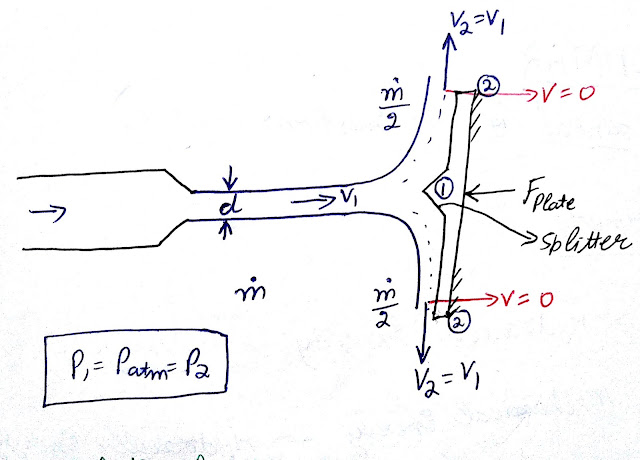Lecture - 3 (jet strikes stationary vertical and inclined flat plate)

Jet strikes on vertical stationary flat plate Let us consider a stationary vertical plate on which a jet is striking. The jet is having diameter 'd'. The mass flow rate of Jet is represented by 'm' kg/s. This simply means that 'm' kilogram of water is coming out of nozzle per second. The jet is striking at the middle of the plate with velocity 'V1' metre per second. After the impact of Jet on the plate, the jet will split equally and flows over the plate. After that the jet will exit the plate from its tip in tangential direction. Now here Jet is striking the plate normally or perpendicularly at point 1 and exit the plate tangentially from the tip of the vertical plate represented by point 2 with velocity 'V2' m/s. If we consider this plate to be frictionless then the entry velocity and exit velocity will be same (V1=V2). Also the pressure throughout the plate is atmospheric, wheather it will be on entry point of plate which is point 1 or it...

